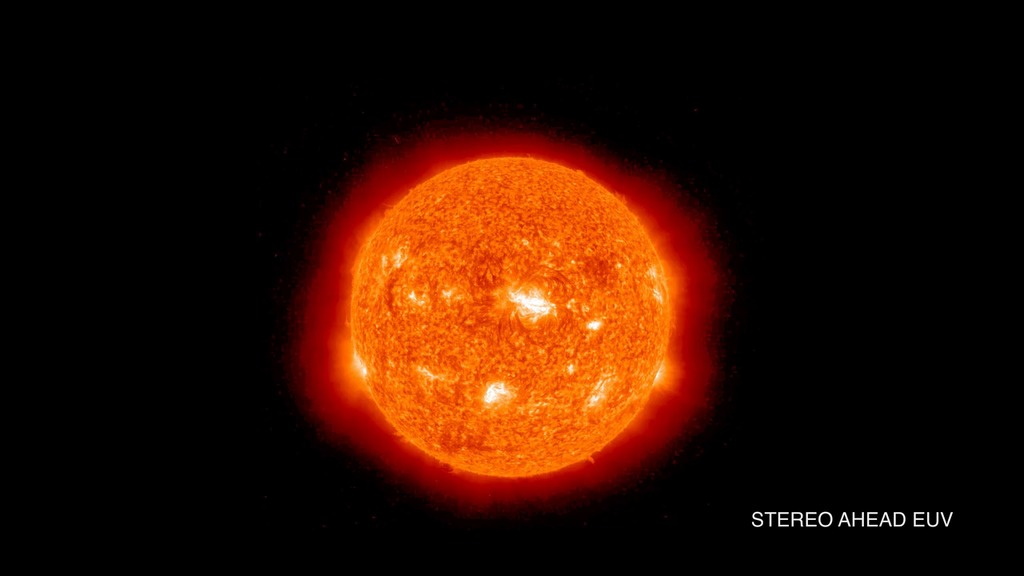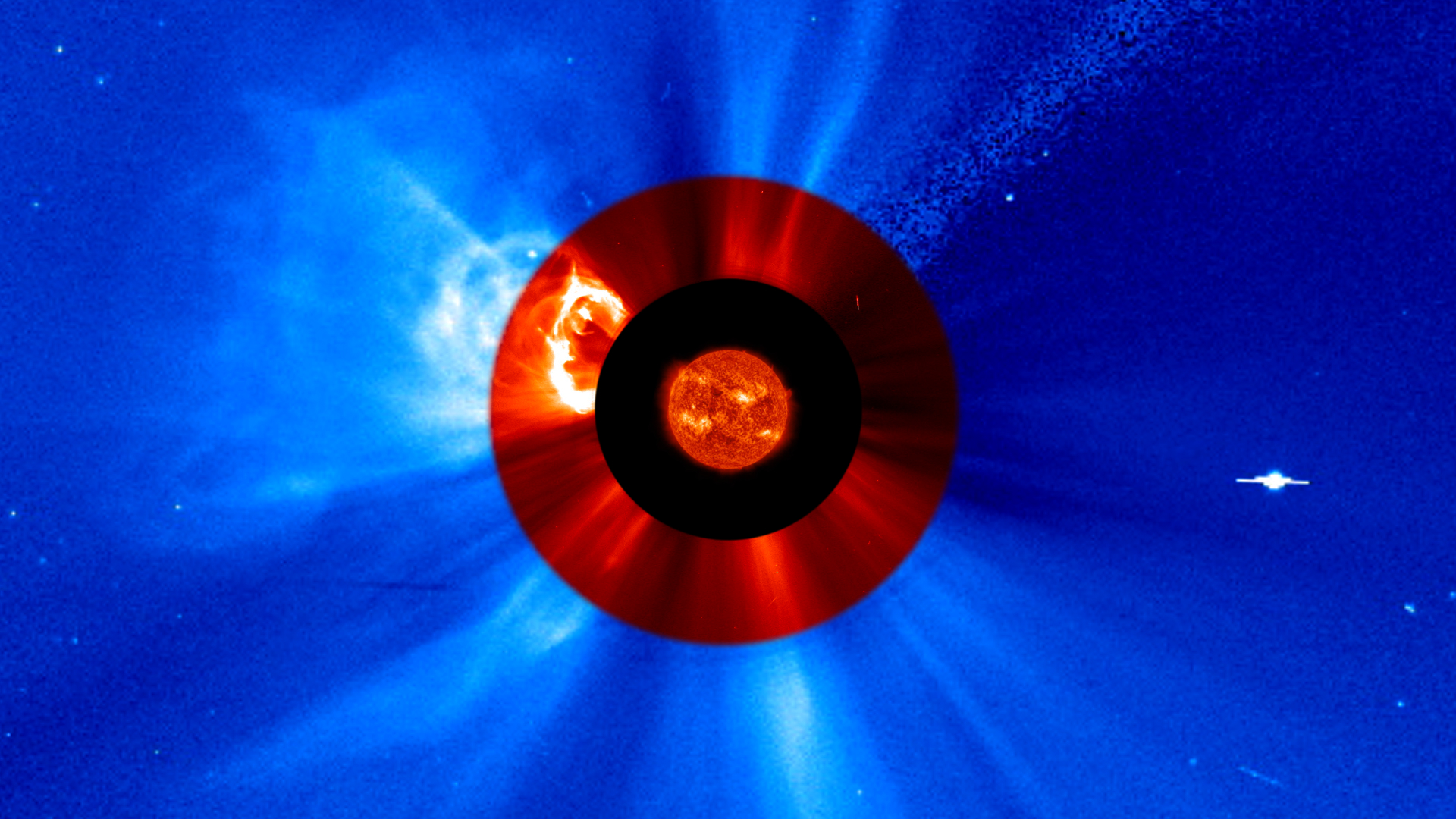Tracking Solar Eruptions

Explore how scientists trace the journey of material exploding from the sun.
Two main types of explosions occur on the sun: solar flares and coronal mass ejections. Unlike the energy and X-rays produced in a solar flare—which travels at the speed of light and can reach Earth in eight minutes—coronal mass ejections, or CMEs, are giant, expanding clouds of solar material that take one to three days to reach our planet. When a CME blasts off the sun, scientists rely on instruments called coronagraphs to track their progress. Coronagraphs block out the bright light of the sun so that the much fainter material in the solar atmosphere—including CMEs—can be seen in the surrounding space. NASA's STEREO mission consists of two spacecraft, each equipped with two coronagraphs (COR 1, COR 2) and an extreme ultraviolet camera (EUV) that together help scientists model the journey of a CME from the sun's surface into its atmosphere and beyond. Watch the video for views of an eruption seen by the STEREO Ahead spacecraft.
This video shows views of a coronal mass ejection on the sun observed by instruments aboard the STEREO Ahead spacecraft on May 1, 2013.

STEREO’s extreme ultraviolet camera captured this image of solar material—a heated, charged gas called plasma—leaving the sun’s surface.

As material from the sun traveled outward it could be observed in the larger view (green) of STEREO's coronagraph 1 instrument.

Using STEREO's coronagraphs and extreme ultraviolet camera, scientists were able to track the CME from the sun's surface out to 6.3 million miles.
Credits
Please give credit for this item to:
NASA's Goddard Space Flight Center
Video and images courtesy of NASA/STEREO
-
Writer
- Karen Fox (ADNET Systems, Inc.)
-
Animators
- Scott Wiessinger (USRA)
- Tom Bridgman (Global Science and Technology, Inc.)
-
Video editor
- Scott Wiessinger (USRA)
-
Producer
- Scott Wiessinger (USRA)
Release date
This page was originally published on Thursday, February 5, 2015.
This page was last updated on Wednesday, May 3, 2023 at 1:50 PM EDT.

